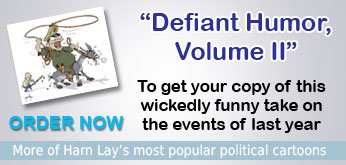
CONTRIBUTOR
| By MIN ZIN | Monday, July 25, 2011 |
It has been more than 100 days since President Thein Sein’s new government took office in Burma after a widely criticized “sham” election in November 2010. Many Burma analysts and opposition activists alike have examined the work of a new government by questioning whether the recent changes in Burma demonstrate the beginnings of a process of genuine democratic transition, or whether this is merely “old wine in a new bottle.”
Unfortunately, the question in itself is wrong and misleading. The changes that are likely to take place under the Thein Sein government represent neither democratic transition nor recorked wine.
I have consistently argued since 2008 on the pages of The Irrawaddy that the new constitution and the 2010 elections will not change incompatible goals and relations between military and civilian forces, broadly speaking state-society relations.
As result, the post-2010 regime will not change any salience of the issues including political prisoners, ethnic conflicts, and other rights violations that the country has been facing and which have earned it pariah status. However, I argued that November's election will contribute to changes in the format of governance—the transformation of the one-dimensional military junta into a hybrid form of government that includes both political and military elements. Regardless of who pulls the strings, this could lead to either a serious internal split or the utter inefficiency of the ruling body.
In brief, my argument noted that even after the elections, the state-society relations would remain more or less the same, but the intra-state relations or state structure could be changed. Now we can engage more in nuanced analysis of the part that I presume changing since the real situation on ground has begun unfolding.
First of all, it is remarkable that Snr-Gen Than Shwe managed to establish a pre-mortem succession arrangement by installing potential rivals as his heirs apparent in different institutional settings. Than Shwe put Thein Sein in the presidential seat but checked the move by installing Tin Aung Myint Oo as a vice president. In parliament, he positioned Shwe Mann, who had widely been speculated to become the first president of a hybrid government, as the chair of the Lower House.
Those who were second-tier in the lineup but reputed as hardliners, such as Htay Oo, Aung Thaung and Maung Oo, have been assigned to lead the military-backed Union Solidarity and Development Party (USDP), the ruling party.
Than Shwe left his commander-in-chief position to Min Aung Hlaing, who is very junior compared with the current leaders of the USDP-led government, but is known as disrespectful of his seniors whenever he has a chance of holding an ascendant position.
In brief, Than Shwe put them in stalemate against one another, and at the same time weakened the overall governance capacity so that these heirs apparent could not unite on the same ground and unsettle his days in retirement. This careful arrangement of inter-institutions and personality rivalries effectively undermines the possible consolidation of a new government’s power.
The generals-turned-civilian leaders, who used to live under the vertical command structure, appear to be clueless that who is now in the driver seat. It is still unclear where the real locus of power in this new arrangement lies. No one so far dares to cross the boundary of others, despite the increasing attempts at jostling and even trespassing.
Second, if governance could be defined in its minimalistic understanding as the tools, strategies and relationships used by governments to help govern, the pivotal focus for analysis would be the state institutions. Therefore, it is necessary to examine the formal as well as the informal strategies and relationships that the new government in Naypyidaw is likely to employ.
In institutional terms, we await to see what office (or who in an initial period) evolves into the dominant mechanism (or figure) to address the challenges of governance—whether it be the administrative body led by Thein Sein who apparently tends to rely on technocrats, or the legislative body led by Shwe Mann, or the USDP led by Htay Oo et al, or even the emergence of a new autocrat, for instance Tin Aung Myint Oo.
As the country is undergoing a political transition, we can’t of course expect democratic check and balance in its state structure formations. One institution, either formal or informal, will turn out to be the dominant instrument in governing the country. Meanwhile, unless there is uncontrollable popular uprising or serious split within the ruling body, the military may remain in the background.
|
||
|
||
|
||
|
||
|
||
|
||
|
||
|
||
|
||
|
||


Thailand Hotels
Bangkok Hotels
China Hotels
India Hotels

|
